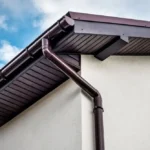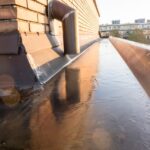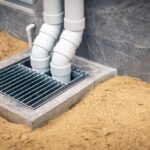When it comes to safeguarding your home, understanding the essentials of roof drainage and foundation protection is crucial. These aspects not only ensure the longevity of your property but also enhance its value. In this article, we will delve into effective strategies and practical tips to enhance your home’s defense against water-related issues.

Understanding the Importance of Roof Drainage
Effective roof drainage is essential to prevent water accumulation and potential damage. Without a proper system in place, water can seep into your home, leading to costly repairs. It’s important to ensure that your gutters and downspouts are in good condition and free from debris. Regular maintenance can prevent clogs and leaks, safeguarding your home from water damage.
Key Components of a Roof Drainage System
A well-designed roof drainage system includes several key components. These typically consist of gutters, downspouts, and splash blocks. Gutters collect rainwater and direct it to downspouts, which then channel the water away from your home’s foundation. Splash blocks are strategically placed to prevent erosion and direct water flow.
Signs of Poor Roof Drainage
Identifying signs of inadequate roof drainage can help you take timely action. Look out for water stains on walls, sagging gutters, or pooling water around the foundation. These are indicators that your drainage system may require attention. Addressing these issues promptly can prevent further damage and protect your home.
Foundation Protection: A Vital Aspect of Home Maintenance
Protecting your home’s foundation is equally important. A strong foundation ensures the structural integrity of your property. Water damage, however, poses a significant threat. By implementing effective foundation protection strategies, you can mitigate these risks.
Preventing Water Intrusion in the Foundation
One of the primary concerns for homeowners is water intrusion into the foundation. To prevent this, it’s crucial to ensure proper grading around your home. This involves sloping the ground away from the foundation, directing water away from the structure. Additionally, installing a reliable drainage system can help manage excess water.
Basement Waterproofing Techniques
If your home includes a basement, waterproofing is essential. Sealing cracks and applying waterproof coatings can prevent moisture from seeping in. It’s also advisable to install a sump pump to remove excess water and prevent flooding. Regular inspections and maintenance are key to keeping your basement dry and secure.
Integrating Roof Drainage and Foundation Protection
The synergy between roof drainage and foundation protection is crucial for comprehensive home maintenance. By integrating these systems, you can create a robust defense against water-related issues. Ensure that downspouts are positioned to direct water away from the foundation, reducing the risk of erosion and damage.
The Role of Landscaping in Water Management
Landscaping plays a significant role in water management. Properly designed landscapes can enhance drainage and prevent water accumulation. Consider incorporating features like rain gardens or French drains to manage excess water effectively. Native plants can also absorb water, reducing runoff and preventing erosion.
Regular Maintenance for Long-Term Protection
Regular maintenance is key to ensuring the longevity of your drainage and protection systems. Inspect your gutters, downspouts, and foundation regularly for signs of wear and tear. Clearing debris and ensuring proper water flow can prevent clogs and damage. By staying proactive, you can safeguard your home for years to come.
Common Challenges and Solutions
Homeowners often face challenges in maintaining effective drainage and protection systems. Common issues include clogged gutters, improper grading, and inadequate waterproofing. Fortunately, these challenges can be addressed with the right solutions.
Dealing with Clogged Gutters
Clogged gutters are a common problem that can lead to water overflow and damage. Regular cleaning and maintenance can prevent blockages. Installing gutter guards can also help keep debris out and ensure smooth water flow.
Addressing Improper Grading
Improper grading can redirect water towards your foundation, causing damage. To address this, ensure that the ground slopes away from your home. Adding soil to create a slope can effectively redirect water and protect your foundation.
Enhancing Waterproofing Measures
Inadequate waterproofing can lead to moisture intrusion and mold growth. Enhance your waterproofing measures by sealing cracks and applying waterproof coatings. Consider consulting a professional for a comprehensive assessment and tailored solutions.
Conclusion: A Secure and Resilient Home
In conclusion, understanding and implementing effective roof drainage and foundation protection tips is essential for maintaining a secure and resilient home. By addressing potential issues and integrating comprehensive solutions, you can safeguard your property from water-related damage.
For more information on roof drainage systems, visit this page. To learn about keeping your drainage systems clear, check out unclogging tips.

FAQs
How often should I clean my gutters?
It’s recommended to clean your gutters at least twice a year, ideally in spring and fall, to prevent clogs and ensure proper drainage.
What is the best way to waterproof my basement?
Sealing cracks, applying waterproof coatings, and installing a sump pump are effective methods to waterproof your basement and prevent moisture intrusion.
How can landscaping help with drainage?
Landscaping can enhance drainage by incorporating features like rain gardens or French drains, which manage excess water and prevent erosion.
This article contains affiliate links. We may earn a commission at no extra cost to you.







